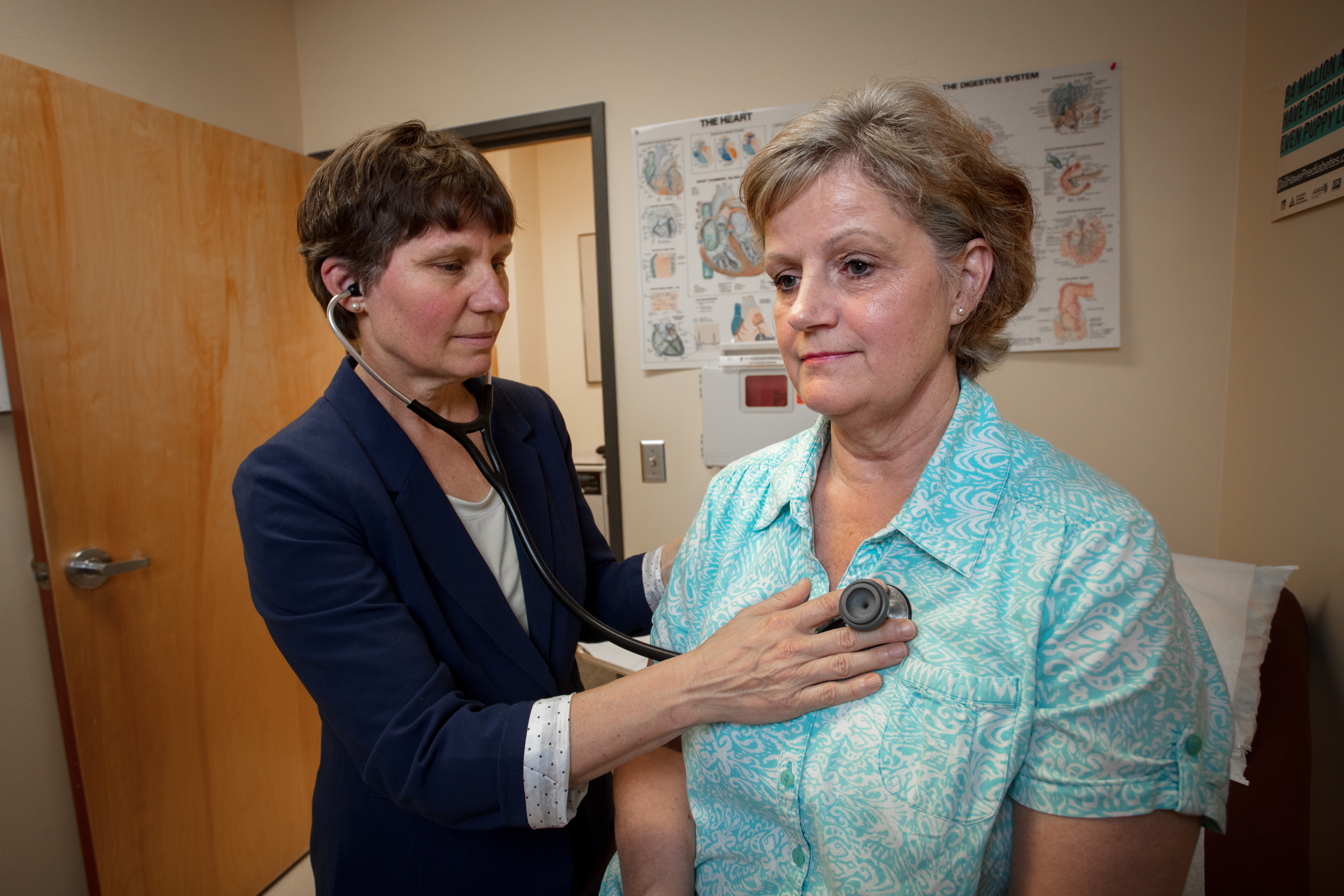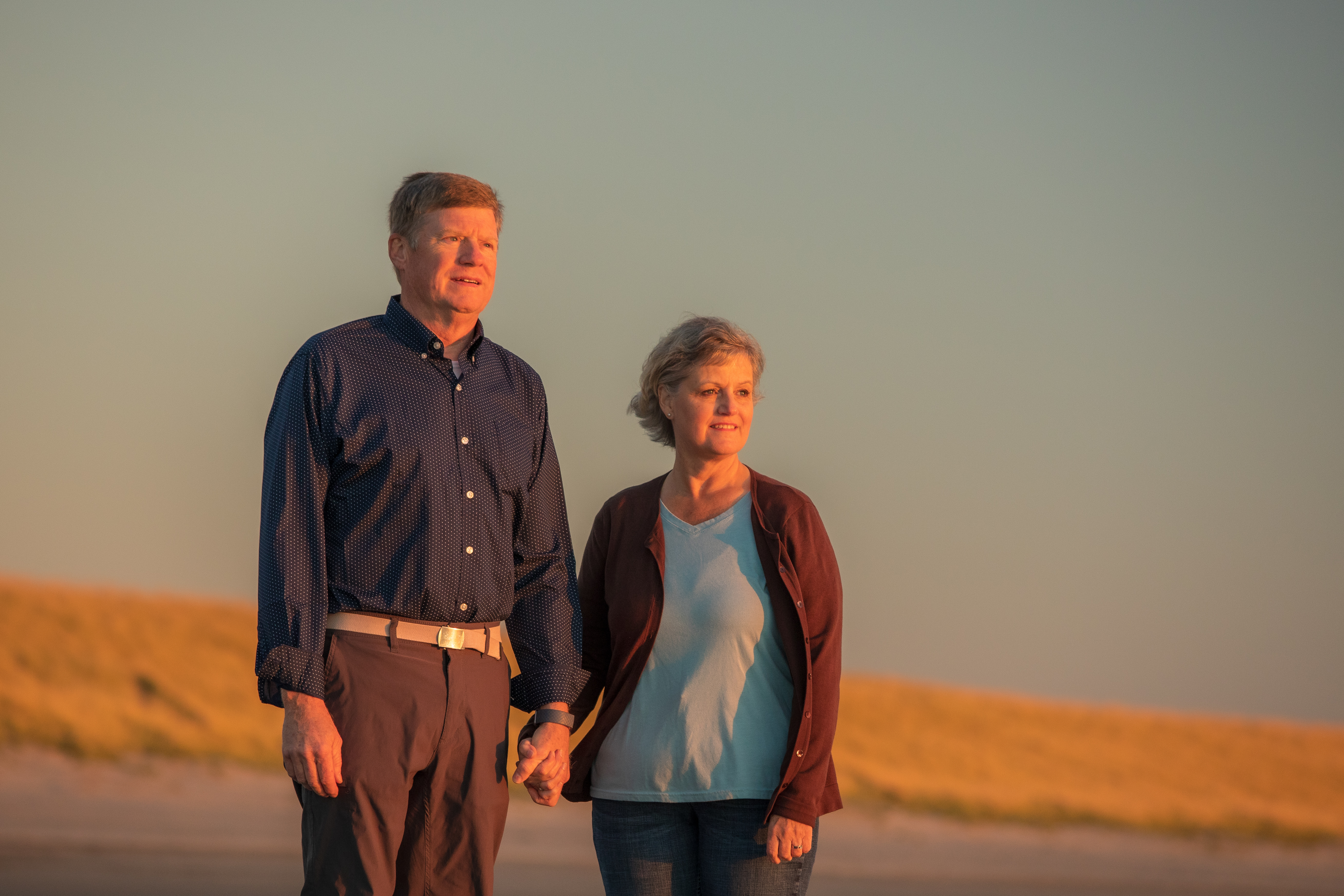
A New Way of Life for the Jurgensens
By Cate Hotchkiss
This article is part of the Oregon Medical Association's Steering Toward Health initiative that aims to reduce the incidence of serious, lifestyle-related chronic conditions.

Photo: Paloma Ayala
December 16, 2019—One year ago, Dr. Kate Merrill, a family physician in Astoria, Oregon and a member of the OMA, diagnosed Steve Jurgensen, then 60, with prediabetes. Her recommended treatment? Lifestyle change.
“Dr. Merrill asked if I would be willing to enroll in a weekly class on healthy eating and exercise,” said Jurgensen, a retired electrician. “She explained that the CDC designed it for people like me who still had time to reverse or even halt the condition before it progressed to full-blown diabetes. My wife, Dottie, signed me up, and asked the program director if she could attend, too, as my support person.”

Photo: Paloma Ayala
In late February, the Jurgensens attended their first National Diabetes Prevention Program (National DPP) session in nearby Warrenton with four other participants. Led by a lifestyle coach, the group met on Thursday afternoons for an hour, and although the curriculum changed each week, the meetings always began with a weigh-in. Steve and Dottie’s initial goal: to lose 5 to 7 percent of their body weight. It’s a modest amount, but enough to significantly reduce the risk of developing type 2 diabetes, according to CDC studies.
Four months later, the Jurgensens had met their goals, due in part to their new habit of walking 30 minutes five times per week. At a checkup with Dr. Merrill, Steve learned he had not only reversed his prediabetes, he’d also lowered his triglycerides and risk of heart disease, which runs in his family. Fueled by such positive results, the husband-wife duo decided to aim higher.

Photo: Paloma Ayala
Over the summer, they gradually increased both the duration and speed of their walks, and included some hills as Dottie’s knee pain lessened, a result of her weight loss. Together, they planned meals and created grocery lists based on the program’s dietary guidelines. They also swapped recipes and stories, of both their ups and downs, with members of their now tight-knit diabetes prevention group.
“We share what’s working, as well as the obstacles we face, and encourage each other during setbacks,” Jurgensen said. “Support makes all the difference.”
In October, when meetings switched from weekly to twice-per-month, the group connected online via MyFitnessPal.com.
By late fall, Steve and Dottie had lost 37 and 30 pounds respectively, down 17 percent. During a recent, three-week solo hiking trip in the high-altitude mountains of Utah, Steve trekked up to ten miles per day over steep terrain. He wore a Fitbit to track his heart rate which, he says, surprisingly stayed in a normal range.

Photo: Cate Hotchkiss
“I haven't felt this good in the woods for 30 years,” he said. “I could actually go for hours without feeling bushed. Tired, yes, but not utterly exhausted.”
Ironically, the thing that had never been on Steve’s radar—diabetes—is what triggered the Jurgensens’ life-changing journey. In just eight months, they improved fitness, health, motivation, and outlook. Plus, they gained an entirely new wardrobe and, most importantly, the endurance to keep pace with their three young grandchildren. But will the changes stick?
“Absolutely,” Jurgensen said. “This isn’t just a yearlong program. It’s our new way of life.”